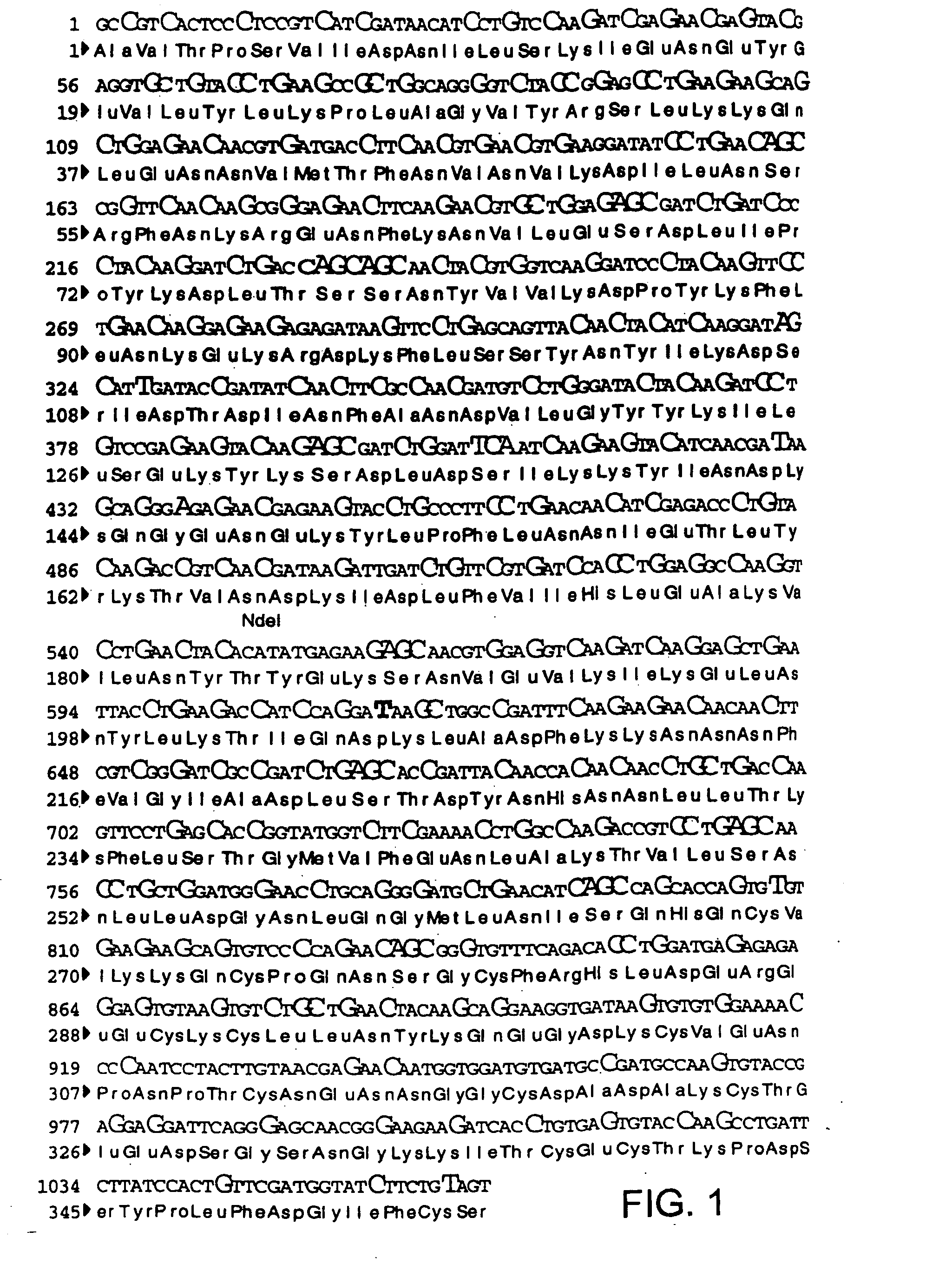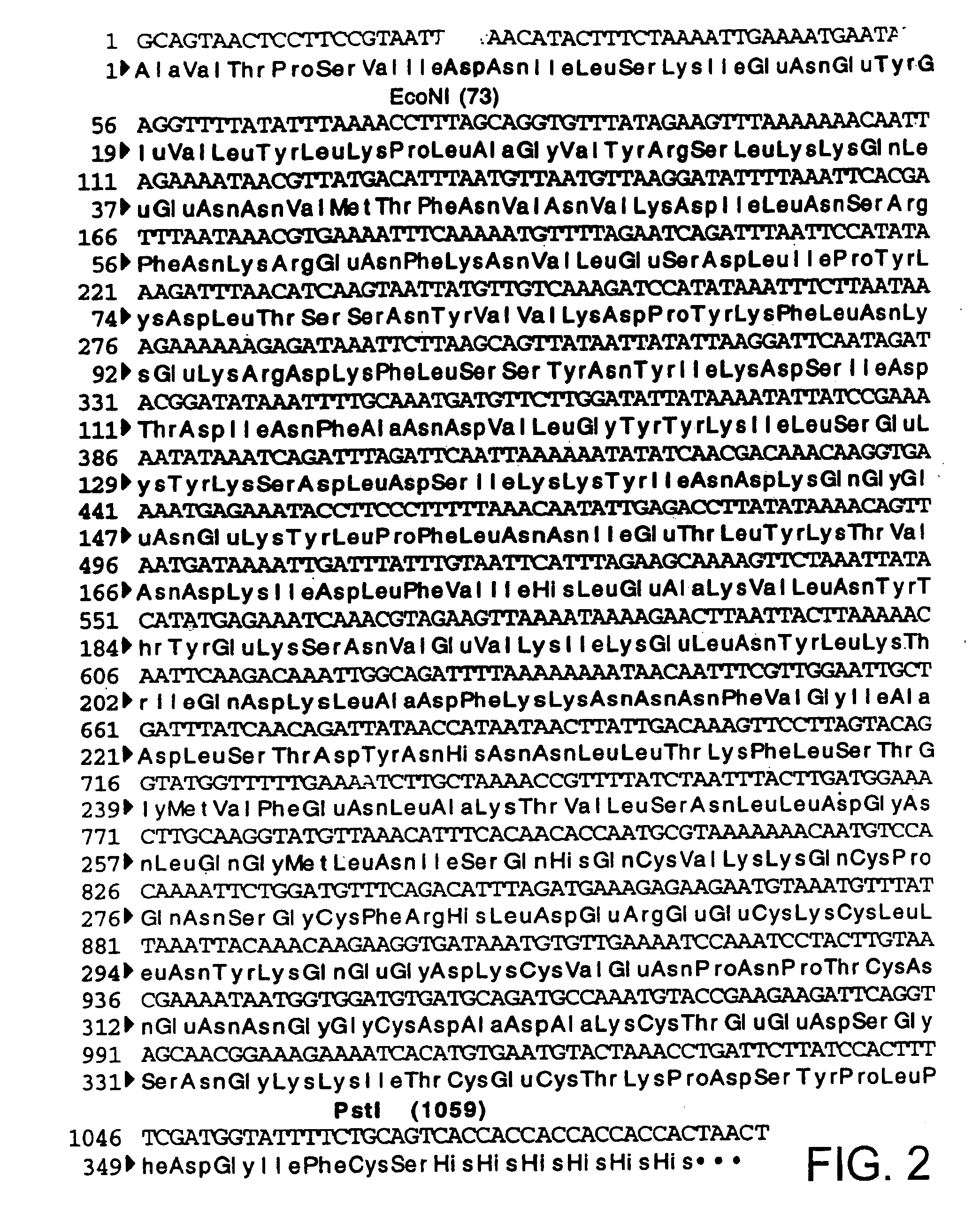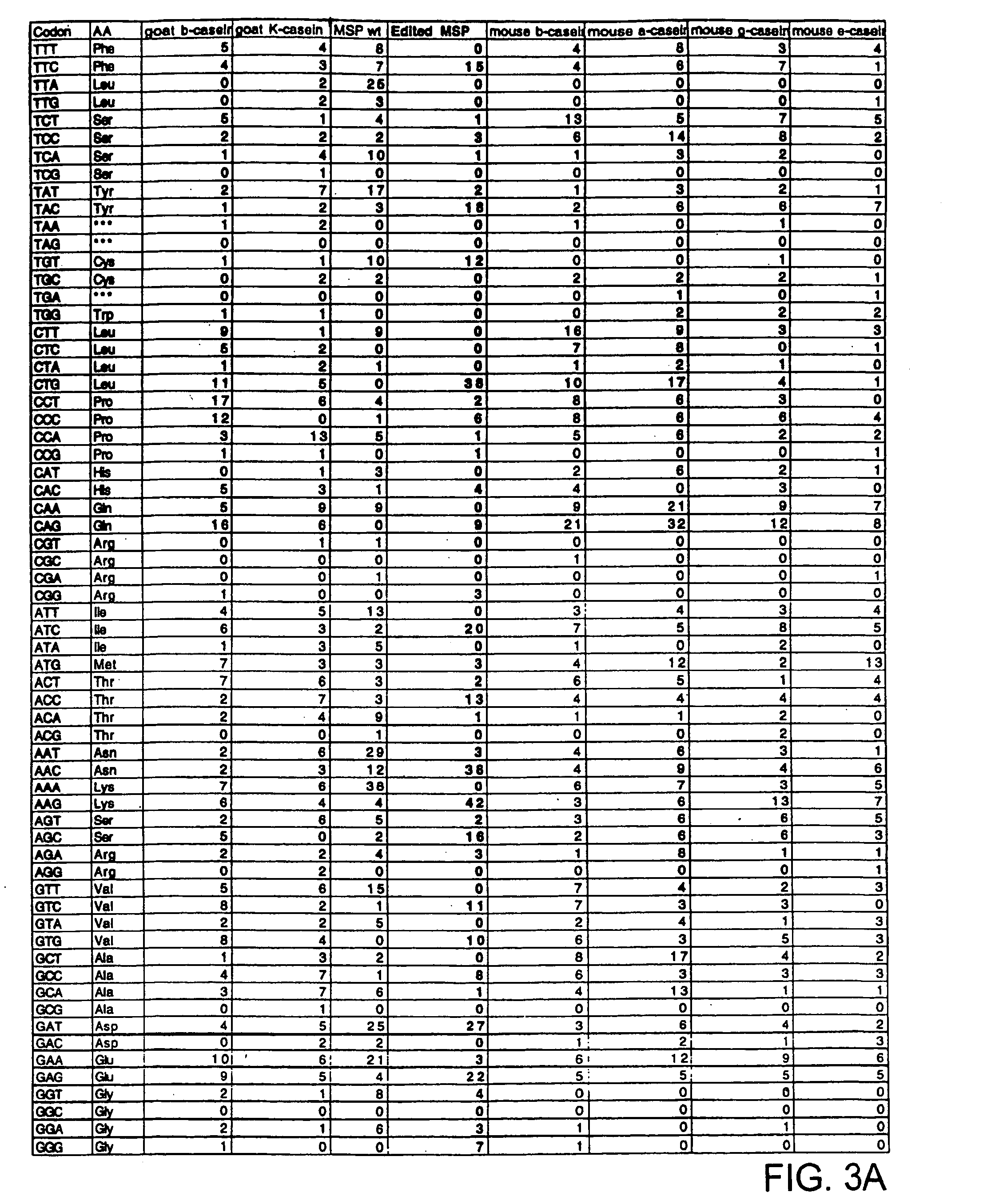Method of purifying recombinant MSP 1-42 derived from Plasmodium falciparum
a technology of plasmodium falciparum and purification method, which is applied in the field of production and processing of heterologous gene expression products, can solve the problems of malaria, difficult to express proteins derived from bacteria, parasites or virus genomes in cell culture systems different from the cell from which the protein was originally derived, and difficult to recombinant production of certain heterologous gene products, etc., to achieve rapid and efficient method of biomolecule separation, reduce concentration polarization, and not increase flux
- Summary
- Abstract
- Description
- Claims
- Application Information
AI Technical Summary
Benefits of technology
Problems solved by technology
Method used
Image
Examples
example 1
Creation of a Novel Modified MSP1-42 Gene
[0104] A novel modified nucleic acid encoding the C-terminal fragment of MSP-1 is provided. The novel, modified nucleic acid of the invention encoding a 42 kD C-terminal part of MSP-1 (MSP-1p) capable of expression in mammalian cells of the invention is shown in FIG. 1. The natural MSP-142 gene (FIG. 2) was not capable of being expressed in mammalian cell culture or in transgenic mice Analysis of the natural MSP-142 gene suggested several characteristics that distinguish it from mammalian genes. First, it has a very high overall AT content of 76% Second, the mRNA instability motif, AUUUA, occurred 10 times in this 1100 bp DNA segment (FIG. 2). To address these differences a new MSP-142 gene was designed. Silent nucleotide substitution was introduced into the native MSP-142 gene at 306 positions to reduce the overall AT content to 49.7%. Each of the 10 AUUUA mRNA instability motifs in the natural gene were eliminated by changes in codon usage...
example 2
Construction of the Native MSP-142 Expression Vector
[0107] To secrete the truncated merozoite surface protein-I (MSP-1) of Plasmodium falciparum˜the wild type gene encoding the 42 KD C-terminal part of MSP-1 (MSP-142) was fused to either the DNA sequence that encodes the first 15 or the first 26 amino acids of the goat beta-casein. This is achieved by first PCR amplify the MSP-1 plasmid (received from Dr. David Kaslow, NIH) with primers MSP1 and MSP2 (FIG. 6), then cloned the PCR product into the TA vector (Invitrogen). The BglII-XhOI fragments of the PCR product was ligated with oligos OT1 and OT2 (FIG. 6) into the expression vector pCDNA3. This yielded plasmid GTC564 (FIG. 4b), which encodes the 15 amino acid beta-casein signal peptide and the first 11 amino acids of the mature goat beta-casein followed by the native MSP-142 gene. Oligos MSP-8 and MSP-2 (FIG. 6) were used to amplify MSP-1 plasmid by PCR, the product was then cloned into TA vector. The XhoI fragment was exercised ...
example 3
Native MSPA42 Gene is not Expressed in CQS-7 Cells
[0108] Expression of the native MSP gene in cultured COS-7 cells was assayed by transient transfection assays. GTC479 and GTCS64 plasmids DNA were introduced into COS-7 cells by lipofectamine (Gibco-BRL) according to manufacturer's protocols. Total cellular RNA was isolated from the COS cells two days post-transfection. The newly synthesized proteins were metabolically labeled for 10 hours by adding 35S methionine added to the culture media two days-post transfection. To determine the MSP mRNA expression in the COS cells, a Northern blot was probed with a 32P labeled DNA fragment from GTC479. No MSP RNA was detected in GTC479 or GTC564 transfectants (data not shown). Prolonged exposure revealed residual levels of degraded MSP mRNA. The 35S labeled culture supernatants and the lysates were immunoprecipitated with a polyclonal antibody raised against MSP. Immunoprecipitation experiments showed that no expression from either the lysate...
PUM
| Property | Measurement | Unit |
|---|---|---|
| pore size | aaaaa | aaaaa |
| pore size | aaaaa | aaaaa |
| pore size | aaaaa | aaaaa |
Abstract
Description
Claims
Application Information
 Login to View More
Login to View More - R&D
- Intellectual Property
- Life Sciences
- Materials
- Tech Scout
- Unparalleled Data Quality
- Higher Quality Content
- 60% Fewer Hallucinations
Browse by: Latest US Patents, China's latest patents, Technical Efficacy Thesaurus, Application Domain, Technology Topic, Popular Technical Reports.
© 2025 PatSnap. All rights reserved.Legal|Privacy policy|Modern Slavery Act Transparency Statement|Sitemap|About US| Contact US: help@patsnap.com



